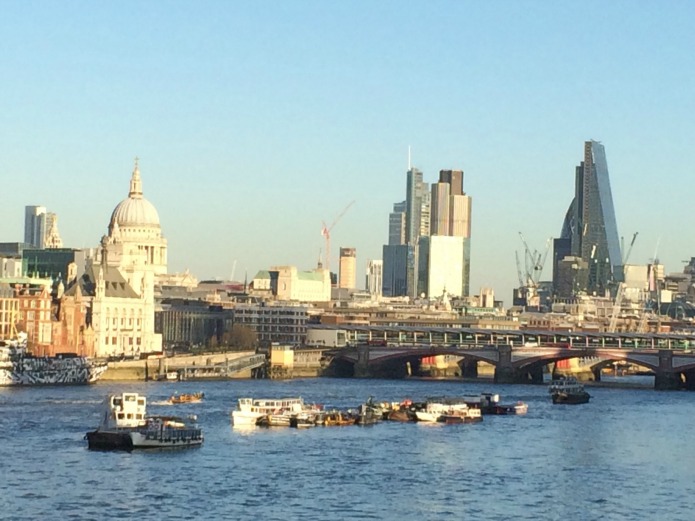My friend Phil Coppell, a Liverpool Blue Badge Tourist Guide, tells me that he took Ray Davies a member of the English rock band The Kinks on a Beatles tour some years ago. He queued up and paid for his ticket like everyone else and, during the tour, mentioned that he had originally set his song Waterloo Sunset in Liverpool but the line ‘Mersey Sunset’ did not scan and he moved it to London. He had always had a soft spot for Liverpool and said that whenever The Kinks played at the Cavern or other venues they always had a great reception.
Thank goodness he changed it to London. For people like me, who came here in the second half of the twentieth century, Waterloo Sunset is the song of our city.
Despite this, none of the organisations which promote London have ever used it to encourage people to come here, possibly because the first words of the song are ‘Dirty old river’, which is hardly an adman’s dream. The single was released in 1967 and reached number two in the UK singles chart, although it was not a hit in the USA. Ironically for a group with a strong socialist background, they were not particularly successful across the Atlantic because of a dispute with the American Musicians Union.
Like many Blue Badge Tourist Guides, I always try to take my groups over the Thames via Waterloo Bridge so that people can see that London is a tale of two cities – Roman and business to the east, royal and government to the west with, symbolically, an office of the Inland Revenue at Somerset House between the two, transferring funds from one side to the other. The first bridge was designed by John Rennie and opened nearly 200 years ago in 1817. This was replaced by Giles Gilbert Scott’s bridge, which was erected during the Second World War and is often referred to as ‘the ladies’ bridge’ because a large proportion of the workforce was female.

London: The view from Waterloo Bridge.
Terry and Julie, the lovers who meet on the bridge in the song, were not Terence Stamp and Julie Christie, as is often supposed, but Davies’ nephew Terry and his girlfriend who met by the bridge, as so many do.
The bridge has a darker side, being a place of suicides and suspicious deaths. Those who came to London in the first half of the twentieth century would probably identify it more with the play and later film Waterloo Bridge in which Vivien Leigh commits suicide on the bridge as she is unworthy of the love of her soldier fiancé, having worked as a prostitute. In 1978 Georgi Markov, the Bulgarian dissident, was injected with a ricin pellet on the north side of the bridge and died four days later. Five years later the body of the Italian banker Roberto Calvi could be seen from there, hanging from the arches of Blackfriars Bridge. No one has been convicted of either killing.
To return to the iconic anthem, Ray Davies singing Waterloo Sunset was a highlight of the closing ceremony of the London Olympics in 2012. You can even join in singing it at the climax of Sunny Afternoon, the play about The Kinks currently at the Harold Pinter Theatre.







Leave a Reply